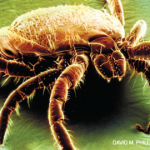Regarding “Ticked Off” by Simon M. Helfgott, MD (August 2013, p. 10–11), I would like to present some alternatives to his conclusions.
Dr. Helfgott states chronic Lyme disease cannot exist if the patients’ tests are negative for Lyme disease, based on the CDC recommendations.
The CDC recommends the screening ELISA test be performed and, if negative, no further testing is necessary. If the ELISA test is positive, then a confirmatory Western Blot test should be performed.
ELISA tests results are not always reliable and false negatives are not infrequent.1 If no further testing occurs because the ELISA test is reported negative, the Lyme disease may go undiagnosed.
If the ELISA test is positive, the more specific Western Blot test is performed. Many laboratories omit bands #31 (outer surface protein A) and #34 (outer surface protein B) from their Western Blot tests. Bands #31 and #34 are so specific for the Lyme spirochete that they were included in the Lyme vaccine (LYMERix), which was available 1998–2000. These omissions may result in a false-negative Western Blot test.
The factor that determines whether acute Lyme disease becomes chronic Lyme disease is the interval between inoculation of the Lyme spirochete and the commencement of adequate treatment. Laboratory studies simulating delayed treatment confirm this conclusion.2 Xenodiagnosis, polymerase chain reaction, and autopsy were the methods used.
The Lyme spirochete may transform into a cystic form, which makes it impenetrable to single antibiotic treatment.3
Delayed treatment in Lyme disease victims is not unusual. Often the initial tick bite and/or the erythema go unnoticed or the initial symptoms are attributed to a viral illness and no antibiotics are administered.
The delayed manifestations of Lyme disease may be similar to tertiary syphilis.4
Alfred Miller, MD
San Antonio, Texas
References
- Ang CW, Notermans DW, Hommes M, Simoons-Smit AM, Herremans T. Large differences between test strategies for the detection of anti-Borrelia antibodies are revealed by comparing eight ELISAs and five immunoblots. Eur J Clin Microbiol Infect Dis. 2011; 30:1027-1032.
- Hodzic E, Feng S, Holden K, Freet KJ, Barthold SW. Persistence of Borrelia burgdorferi following antibiotic treatment in mice. Antimicrob Agents Chemother. 2008;52:1728-1736.
- Miklossy J, Kasas S, Zurn AD, McCall S, Yu S, McGeer PL. Persisting atypical and cystic forms of Borrelia burgdorferi and local inflammation in Lyme neuroborreliosis. J Neuroinflammation. 2008;5:40.
- Miklossy J. Chronic or late Lyme neuroborreliosis: Analysis of evidence compared to chronic or late neurosyphilis. Open Neurol J. 2012;6:146-157.


